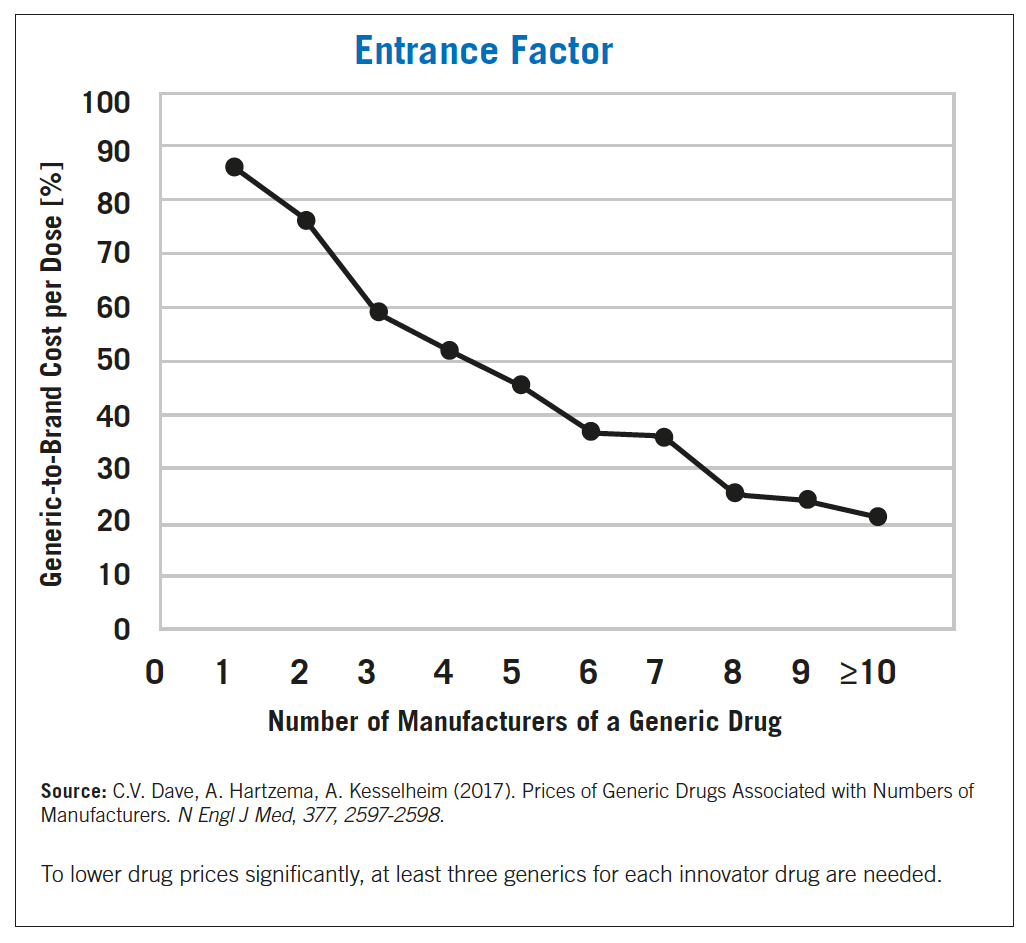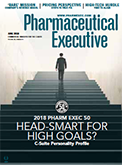Piecing Together the Pricing Puzzle: The Midterm Elections
Pharmaceutical Executive
There is no magic bullet that will dramatically impact drug pricing to everybody’s liking. But a stepwise approach involving a series of reforms, including taking advantage of the next midterm elections, could point the path toward a solution.
There is no magic bullet that will dramatically impact drug pricing to everybody’s liking-patients, industry, and government. But a stepwise approach involving a series of changes, including taking advantage of the next midterm elections, could point the path toward a solution
Recently, my mom called me with a legitimate complaint affecting her everyday life: the medicine she needs to treat a chronic, yet common condition is too expensive, and the amount she ends up paying for each refill depends on how the pharmacist dispenses the prescription. The frustration and anger was palpable and directed at everybody: the pharmacist, her doctor, the drug company, her insurance company, Congress, and the President. Had she known about pharmacy benefit managers (PBMs), she would have blamed them, too.
The pharmaceutical industry, PBMs, and insurers have vacillated between justifying high costs due to innovation (noting their own programs to lower prices in the process) and pointing fingers at each other in search for the true culprit deserving the blame. While none of the finger-pointing is productive, all of these points have elements of truth.
FDA Commissioner Scott Gottlieb has repeatedly voiced his frustration with increasing drug prices and the lack of competition. And consumer surveys have repeatedly pointed out that pricing is the number one priority of consumers across the US. Congress has channeled the voice of voters when decrying the fact that the US government invests more than $30 billion a year in the National Institutes of Health, yet patients continue to face high drug prices. Meanwhile, in response, President Trump laid out his blueprint for lowering drug prices (see page 8) last month-a long list of policy ideas without specific timelines of implementation.
To begin to address this multifactorial problem, Congress and regulators believe they would have to enact a range of system-wide policy reforms that will spur incentives for both innovation and price competition. As the November midterm elections approach, Congress has a limited window-between now and the end of July-in which to pass legislation. Once the window closes, the next real opportunity for legislation won’t arise until a year from now. For complex solutions to work, they require thorough analysis, wise implementation, careful evaluation, and subsequent evolution. Little of this seems likely, but progress is often made when policymakers start with the “gettable good” instead of the “ephemeral perfect.”
Why eye midterm elections?
Elections can serve as forcing functions. They may sharpen the focus of politicians as they are eying potential accomplishments on which to run, making the spring and summer before an election a potentially productive legislative period. If no legislation is passed before the election, the results of the midterms, no matter which direction they go, are likely not going to provide clear outcomes any time soon. Yet, Congress could enact important limited reforms that converge over time to bring about regulatory, market, and cultural shifts required to permanently affect drug pricing.
Getting started on the good is better than waiting indefinitely for the perfect. What limited actions could be the first steps on the long road to lowering drug prices? Two areas of opportunity are generics and price transparency.
Increased generic competition after patent expiration
At the end of their patent life, every brand-name drug could, in theory, face competition from one or more generic equivalents. Bringing generics to market quickly would increase competition and decrease prices. In fact, available low-cost generics may have generated more than $1.6 trillion in US healthcare savings over the past decade. But as the chart below illustrates, we need at least three generics for each brand-name drug to significantly impact prices.

The challenges: (1) Pharma companies are incentivized to avoid competition from generics and place barriers to their entry; (2) Complex generics and biosimilars face cultural resistance from large parts of the patient population, who prefer brand-name drugs.
• Vigorous competition lowers prices. In the case of drugs, competition ought to increase once patent protections have lapsed. However, some brand-name drugmakers have gamed the system and prevented generics from entering the market. For example, for a generic to be approved, the FDA requires studies showing that it achieves the same blood levels at a particular dosage as the brand-name drug. Yet, as Gottlieb pointed out in a recent interview, generic companies frequently cannot get access to doses of a branded company’s drug, even if they purchase the drug as a regular customer. In other cases, companies have claimed intellectual property on package slips, or moved production plants to a new location. These actions block generics from the market place and keep prices high even after patent protection has ended.
• Cultural barriers remain for uptake of biosimilars. Biologic drugs, which are complex large-molecule drugs grown from tissue, comprise more than 25% of prescription drug spending, yet as of December 2017, there were only nine biosimilars on the US market. In contrast, Europe has approved 33. What’s more, the available biosimilars have not been granted “interchangeable” status by the FDA, preventing pharmacists from substituting brand-name drugs with biosimilars when filling prescriptions. The underlying cause for this difference is most likely two-fold: a lack of both trust and incentive. Culturally, there has been a widespread belief that, because biosimilars are slightly different, they are not going to have the same positive treatment effect as their brand-name equivalents. Furthermore, there’s no incentive for critically ill patients to enter a clinical trial for a biosimilar (or any generic), if the brand-name drug is widely available and works. With these cultural and regulatory hurdles, it’s not always economically attractive to invest in biosimilars.
The solutions: The FDA has some ability to affect drug pricing through increased competition and address regulatory loopholes that can be used to subvert the system. Congress can provide legislation to drive this more quickly. There is also an opportunity to learn from how Europe has tackled the biosimilars issue and make it culturally and economically attractive to increase the number of biosimilars on the market.
• The FDA could require companies to provide dose details and prevent brand-name companies from self-imposing Risk Evaluation and Mitigation Strategies (REMS) restrictions. According to Gottlieb, the FDA has already put forward a portfolio with measures that will impact market competition. Congressional support would help progress this.
• From a regulatory perspective, we need instructions on how biosimilars can gain “interchangeable” status in the US and address the issue of large-scale clinical trials for drugs whose brand-name equivalents already exist. A final FDA guidance on how to reach interchangeable status is currently in the works and expected to be completed in 2019. In addition, the path to approval could be smoothed and accelerated by implementing regulatory harmonization for biosimilars across countries, or limit the scope of clinical trials in some other form, as is done for a myriad other substances, including biodefense molecules. Congress can promote these actions by specifically authorizing and funding them.
Transparency and reimbursement
Value-based and outcomes-based pricing has been proposed to make expensive, innovative drugs more affordable. Furthermore, increased transparency on drug pricing, including rebates, would allow payers to optimize negotiation and hold manufacturers and providers accountable for the prices they charge. It would also help reattribute incurred expenses to the right link in the provider chain.
The challenges: (1) To bring down the cost of treatments with big price tags, we need to create fair and appropriate reimbursement models that maximize treatment benefits per unit cost. (2) Drug pricing transparency will require manufacturers, PBMs, and providers to release detailed pricing information.
The solutions: Tying prescription drug pricing to the value the treatment brings to patients may help price drugs more appropriately while providing the returns that incentivize shareholder investments toward innovative drugs. In addition, states may implement laws that require manufacturers to report cost information, price increases, and patient assistance programs.
• The Centers for Medicare & Medicaid Services (CMS) is currently developing new payment models to curb the cost of highly-priced breakthrough medical treatments. In one considered model, patients would pay depending on treatment success rates for certain conditions, charging extra for a drug that treats one condition more effectively than another. While CMS doesn’t negotiate prices or purchase drugs, it can set ground rules for the care companies and state Medicaid agencies that are engaged in price negotiations. Again, these models can be championed by legislation.
• Fair reimbursement models and pricing transparency could be achieved by incremental changes that piggyback on other reforms. For example, every three to four years we see reforms to Medicare. Future reforms may provide an opportunity for piloting proposed changes in individual states. If not championed voluntarily by manufacturers, other states could follow Oregon’s footsteps, whose new drug price transparency law requires manufacturers to report certain pricing and patient assistance information for each prescription drug that costs $100 or more for a 30-day supply or for treatments lasting less than a month.
What’s to come?
Solving my mom’s problem is not going to happen with one policy change. There is no single measure that, with the stroke of a pen, will dramatically affect drug pricing. Only a collection of measures will eventually bring down drug prices and create a large enough market incentive for drugmakers to re-price their healthcare products. This will require some amount of experimentation. Anyone claiming to know exactly how to solve

this multifactorial problem is getting ahead of the facts.
However, given the importance of the problem and the limited time to effect significant change before the midterm elections, it makes sense to start with goals that are attainable before August this year and aim for better, if not perfect, solutions next year. To solve the drug pricing problem while maintaining innovation will require a series of market, political, regulatory, and cultural changes that converge on a best solution. My mom, like all Americans, will be best served if industry, government, and patient stakeholders work together toward a solution that takes advantage of the legislative windows before and after the midterm elections.

Sudip Parikh is Senior Vice President and Managing Director, DIA Americas

FDA Grants Priority Review to Regeneron’s Eylea for Macular Edema Following Retinal Vein Occlusion
April 18th 2025Regulatory action was based on data from the Phase III QUASAR trial, which demonstrated that Eylea HD dosed every eight weeks achieved non-inferior visual acuity outcomes compared to Eylea in patients with macular edema following retinal vein occlusion.
Navigating Distrust: Pharma in the Age of Social Media
February 18th 2025Ian Baer, Founder and CEO of Sooth, discusses how the growing distrust in social media will impact industry marketing strategies and the relationships between pharmaceutical companies and the patients they aim to serve. He also explains dark social, how to combat misinformation, closing the trust gap, and more.